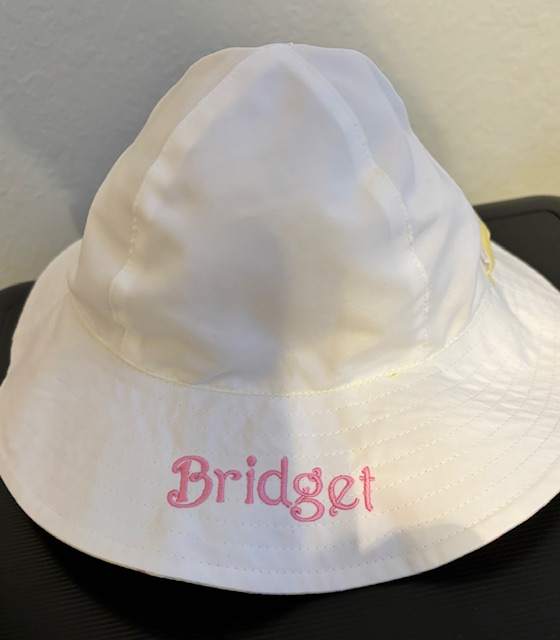The Art of Customized Needlework: Unlocking the Secrets to Creating Unique and Unforgettable Styles
The keys to producing custom embroidery styles that captivate the eye and leave an enduring impression lie in a fragile equilibrium of method, creativity, and interest to detail. As we dive into the world of custom-made needlework, we discover the nuanced interplay in between thread selection, sew intricacy, and layout personalization that boosts a mere garment to a work of art.
Picking the Right Needlework Threads
When choosing needlework strings, what essential aspects should you consider to guarantee the finest outcomes for your personalized styles? The selection of needlework string is important in determining the final end result of your embroidered layout.
Moreover, the weight or density of the string plays a considerable role in the appearance of the embroidery. Thicker threads can include dimension and appearance to your design, while finer strings are ideal for elaborate information and tiny text. In addition, thinking about the color fastness and washability of the string is crucial to guarantee that your customized styles maintain their quality and vibrancy gradually. By thoroughly evaluating these variables and picking top notch strings that satisfy your certain demands, you can boost the aesthetic allure and longevity of your embroidered developments.
Exploring Various Stitch Strategies
To dig into the world of 'Discovering Various Stitch Techniques', one have to understand the ins and outs and nuances that each sewing technique gives the art of embroidery. Various stitch techniques not only add aesthetic interest however additionally add to the overall appearance and dimension of the layout. One prominent stitch technique is the satin stitch, which entails carefully stuffed parallel stitches to develop a smooth and glossy surface, suitable for loading in forms and producing vibrant details.
On the other hand, the backstitch is a functional method commonly utilized for laying out and including great details. It includes stitching backwards to create a strong line of needlework. In addition, the French knot stitch adds a responsive element to layouts, best for creating textured accents like flower facilities or ornamental touches.
Checking out different stitch methods enables embroiderers to play with light, darkness, and depth within their styles, raising the visual appeal and creative top quality of their needlework tasks. By understanding various sewing methods, one can unlock unlimited possibilities for producing distinct and unforgettable custom needlework items.
Incorporating Personalized Style Elements
Having actually discovered the intricacies of various stitch techniques such as the satin stitch, backstitch, and French knot, the focus now shifts in the direction of including personalized design components in personalized embroidery jobs. Personalized layout aspects play a vital role in making needlework projects absolutely special and memorable. One means to integrate personalization is by adding initials, names, or substantial days to the style. This not just adds a personalized touch but likewise boosts the nostalgic value of the embroidery item.
An additional way to incorporate customized style components is by including signs or themes that hold special meaning to the recipient or mirror their rate of interests and individuality. Incorporating a favorite flower, animal, or hobby-related icon can make the embroidery design a lot more purposeful and personalized. Furthermore, picking shades that resonate with the recipient or align with the desired motif can even more heat transfer on t-shirts and aprons enhance the customization of the embroidery job.
Grasping the Art of Shade Coordination

One key aspect of shade coordination is recognizing color concept. This consists of recognizing how various colors engage with each other, the feelings they convey, and just how they can be incorporated to develop visually appealing layouts. By using color concept concepts, embroiderers can create unified color schemes that enhance the general look of the layout.
Furthermore, taking note of contrast is vital in color coordination. Making use of contrasting shades can aid specific elements of the layout pop, boost legibility, and produce a visually vibrant needlework item. By grasping the art of color sychronisation, embroiderers can elevate their designs and create unforgettable items that resonate with clients and visitors alike.
Enhancing Texture With Advanced Needlework Stitches

French knots, as an example, are ideal for adding small, raised dots to your design, mimicking the appearance of grains or developing a textured surface. Bullion knots, on the other hand, can be utilized to create twisted, ropelike elements that add a lavish feel to the needlework. Seed sewing includes little, scattered stitches that can fill out areas with a speckled structure, while turkey work produces fluffy, dimensional accents reminiscent of pet fur or vegetation. Try out these advanced embroidery stitches enables you to push the boundaries of traditional embroidery and create truly special and aesthetically appealing textures in your styles.
Final Thought
In conclusion, the art of custom needlework entails a combination of selecting the ideal strings, exploring different stitch strategies, integrating customized design elements, understanding shade control, and boosting texture with sophisticated stitches. By understanding and applying these crucial elements, embroiderers can develop special and remarkable styles that showcase their imagination and ability. Embroidery fanatics can unlock the tricks to developing attractive and bespoke pieces that stand out and leave an enduring impact.